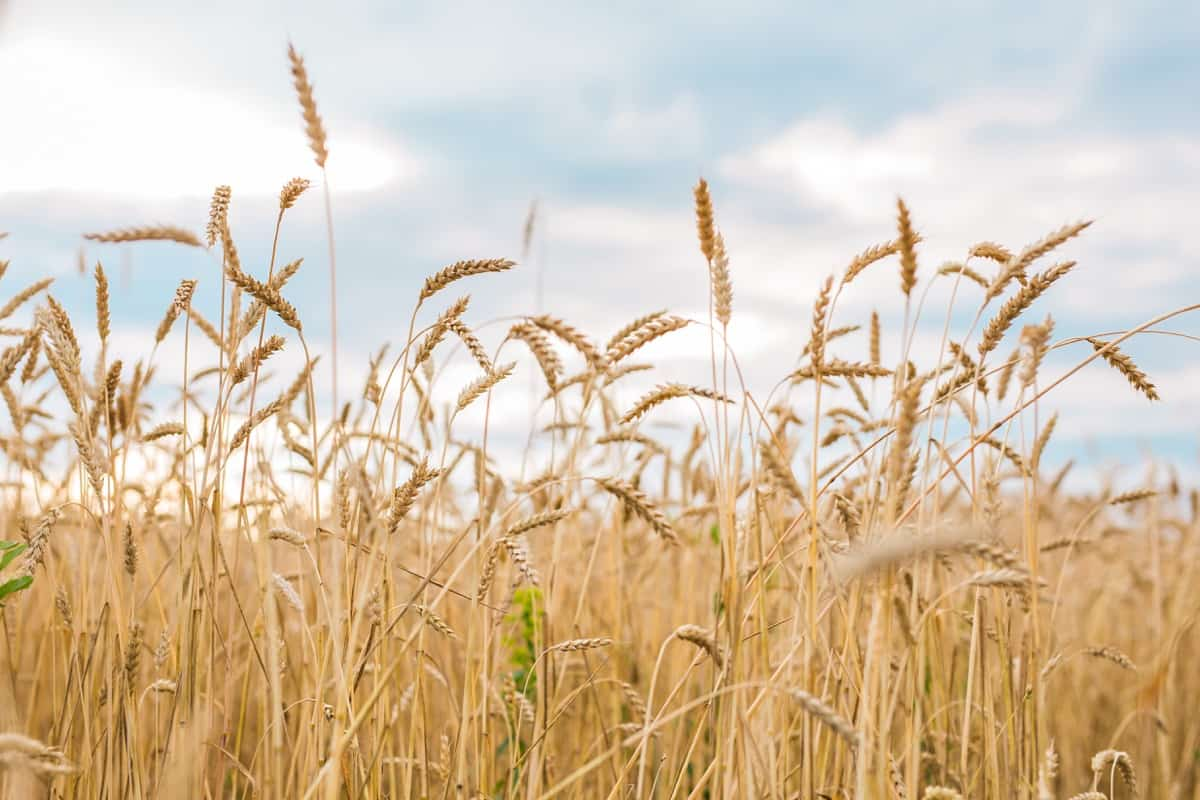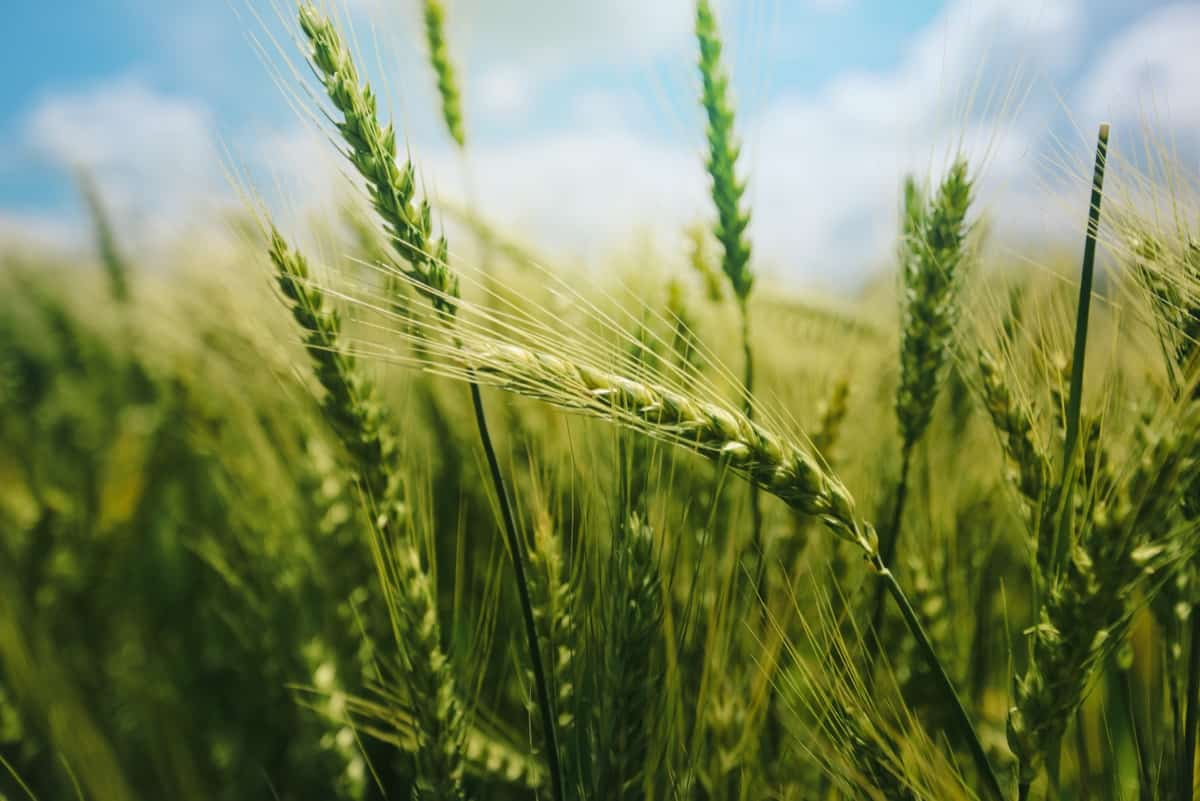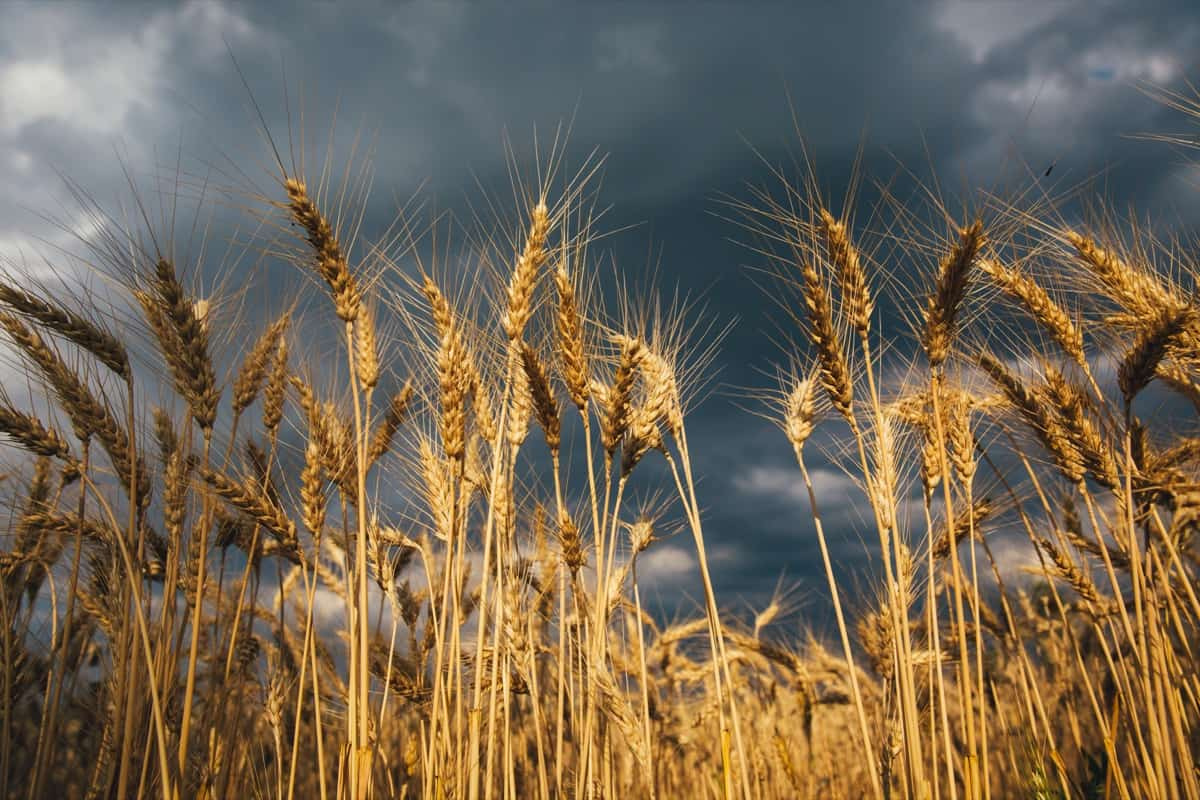Powdery mildew is a fungus that infects a wide variety of plants. Many distinct species of ascomycete fungus in the order Erysiphales cause powdery mildew diseases. Powdery mildew is one of the more superficial plant diseases to diagnose due to its distinguishing characteristics. White powdery patches appear on the leaves and stems of infected plants.

The basal leaves are the most afflicted. However, mildew can grow on any section of the plant above ground. As the disease proceeds, the spots become larger and denser as a huge number of asexual spores are produced, and the mildew may move up and down the plant.
Powdery Mildew disease management in Wheat
The causal organism of Powdery Mildew disease
The pathogen responsible for powdery mildew disease in Wheat is Erysiphe graminis tritici, a fungus species belonging to the genus Erysiphe. This fungus produces septate, superficial, hyaline mycelium on the leaf surface, characterized by a network of delicate, branching filaments. The mycelium produces short conidiophores, specialized structures that produce conidia, or reproductive cells. The conidia are elliptical, hyaline, single-celled, thin-walled, and produced in chains.
In addition to conidia, E. graminis tritici also produces cleistothecia, which are dark, globose structures that contain asci. The asci contain 9-30 oblong, hyaline, and thin-walled ascospores, the primary means of reproduction and spread of the fungus. The ascospores can infect new plants, leading to the spread of powdery mildew disease in wheat crops.
Disease cycle of Powdery Mildew disease
Powdery mildew in Wheat is caused by the fungal pathogen Erysiphe graminis tritici, which grows and reproduces. The fungus lives as latent mycelium and asci in infected plant detritus, waiting for ideal circumstances to develop. The fungus may infect young plants with high humidity and moderate temperatures.
Powdery mildew spreads primarily through ascospores, which are formed within cleistothecia. Wind currents carry the ascospores to neighboring plants, where they infect the surface of the leaves, stems, and grain heads. Infected regions may produce white, powdery growths that, over time, will spread and cover huge parts of the plant.
Powdery mildew can spread in the air via airborne conidia generated by the fungus on the surface of diseased plants. The conidia can infect new plants, causing the illness to spread.
Favorable conditions for the spread of Powdery Mildew disease
Powdery mildew thrives in high humidity and cool to moderate temperatures, with optimal temperatures ranging from 20-21°C. High humidity provides the ideal environment for the fungus to grow and infect new plants. At the same time, the cool to moderate temperatures allow the fungus to persist and spread. The disease can infect plants without rain if high humidity and moderate temperatures are present.
In case you missed it: Loose Smut Disease Management in Wheat: Symptoms, Treatment, Chemical, Biological, Natural, and Organic Control

Symptoms of Powdery Mildew disease in Wheat
- Powdery mildew is a disease caused by the top surface of the leaves and looks like white powder.
- The leaf, sheath, stem, and flower sections all have greyish-white powdery growth.
- Powdery growth develops into a black lesion, causing the leaves and other components to dry.
- The whitish growth includes mycelium and fungal spores.
- The powdery growth eventually turns grey or dark in tone.
- Under severe disease circumstances, the fungus may affect covered leaf sheaths, stems, and earheads.
- Infected plants grow stunted and provide a low yield due to reduced size and quantity of leaves.
Powdery Mildew disease management in Wheat by cultural methods
- Plant disease-resistant varieties
- After harvesting, burn crop refuge on the field
- Crop rotation with non-host plants such as corn, soybeans, or alfalfa
- Planting and spacing enough space between plants to allow for optimum air circulation, reducing infection risk.
Powdery mildew Disease Management in Wheat by Biological methods
Consider an integrated strategy that includes preventative and biological interventions.
Powdery Mildew disease management in Wheat by chemical methods
- Wheat was protected against this and other fungal infections by seed treatment with difenoconazole, followed by flutriafol and triticonazole.
- Spray 0.2% wettable sulfur or 500 g/ha carbendazim.
- Spraying with a combination of Mancozeb 75 WP and karathane has been proven effective.
- Fungicides such as fenpropidin, feranimol, tebuconazole, cyproconazole, and propiconazole can be used to treat the infection.
- Prepare the mixture by combining 16 parts Mancozeb 75 WP and four parts Karathane 25 wettable powder.
- Spray the mixture at a rate of two kg per 1000 liters of water per acre. Three sprays should be used every 10-15 days.
- The amount of water used for different sprays can be determined by the crop’s growth stage.
- Another method of protecting plants is to use a silicon- or calcium-silicate-based solution that strengthens plant resistance to this disease.
Powdery Mildew disease management in Wheat by organic/ natural methods
- Milk solutions have been used effectively as a treatment for powdery mildew by small organic producers and gardeners.
- At the first indication of illness or as a prophylactic precaution, milk is diluted with water (usually 1:10) and sprayed over sensitive plants.
- To control the disease, weekly applications are required.
Preventive measures to control Powdery Mildew disease in Wheat
- Selection of resistant varieties
- Avoid sowing too early in the season.
- Adjusting sowing density to allow for optimal aeration of cultures.
- Regularly inspect the field for the first symptoms of sickness.
- Apply nitrogen with recommended level, as excess nitrogen in the soil promotes disease development.
- Plan a crop rotation that includes non-host plants.
- To disturb the field’s life cycle, remove volunteer plants and weeds.
- To increase plant resilience, supplement the fertilization schedule with silicon or calcium silicate.
In case you missed it: Brown Rust Disease Management in Wheat: Symptoms, Treatment, Chemical, Biological, Natural, and Organic Control

Conclusion
Powdery mildew is a disease that affects wheat plants and can cause much damage if it isn’t taken care. To effectively control powdery mildew in Wheat, it is critical to understand the disease’s symptoms, causes, and disease cycle. Chemical, biological, natural, and organic management strategies are available for powdery mildew in Wheat.
Fungicides are used in chemical control methods, whereas beneficial microbes are used in biological control approaches. Crop rotation, sanitation, correct planting and spacing, adequate fertilization, and irrigation management are examples of natural and organic control strategies. To get rid of powdery mildew in Wheat, you need an integrated approach that combines cultural control methods with chemical and biological treatments, depending on your needs.
- Beneficial Insects in Pest Management
- Natural Solutions for Pest Control in Flower Gardens
- Types of Fungicides Used in Agriculture
- Common Issues in the Fruit Development Stage of Pomegranate Farming
- Fruit Development Issues in Papaya: Easy Solutions and Treatment
- Soil-Borne Diseases and How to Protect Your Plants
- Practices to Prevent Disease Spread in the Garden
- From Wilted to Thriving: How to Treat Root Rot Naturally in Houseplants
- Natural Remedies to Cure Brown Spots on Fig Tree Leaves